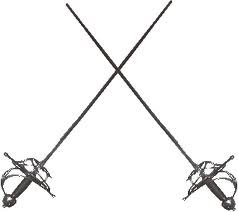There’s no avoiding it, regardless of the type or size of company.
BRYCE ON MANAGEMENT
 When we join a new company, we’re all hoping for a fresh start and clean slate. The last thing we want is to get embroiled in political intrigue, regardless of how petty it might seem. Most of us just want to do our work and move along with our lives. Even if this were so, which is rarely the case, we must still deal with “political correctness” as defined by society; we have to recognize certain protocols in our mannerisms, language, and conduct. So, even before we get started in a new job, we have to recognize there is going to be some form of politics, like it or not. I remember visiting a manufacturing company in the Midwest where a Vice President proudly said to me, “You’ll like this place Tim, there’s no politics here whatsoever.” And I think he firmly believed it too. In reality, they had more cutthroat politics than I had ever seen before.
When we join a new company, we’re all hoping for a fresh start and clean slate. The last thing we want is to get embroiled in political intrigue, regardless of how petty it might seem. Most of us just want to do our work and move along with our lives. Even if this were so, which is rarely the case, we must still deal with “political correctness” as defined by society; we have to recognize certain protocols in our mannerisms, language, and conduct. So, even before we get started in a new job, we have to recognize there is going to be some form of politics, like it or not. I remember visiting a manufacturing company in the Midwest where a Vice President proudly said to me, “You’ll like this place Tim, there’s no politics here whatsoever.” And I think he firmly believed it too. In reality, they had more cutthroat politics than I had ever seen before.
Whether you are a new employee or a visiting consultant, one of the first things you have to determine about a company is its pecking order. An organization chart makes a convenient road map in this regards, but it doesn’t truly define the power structure in a company. For example, a weak manager may actually draw his strength from a powerful assistant. Nonetheless, it is important to identify the fiefdoms of the company, who the key players are, and who the allies and adversaries are. Without such knowledge, you will inevitably trip into some political dispute or become an unwitting pawn in a power play. The best advice in the early going is to simply keep your eyes and ears open, and your mouth shut.
Aside from the power players in an organization, the three most common types of political animals you will encounter are the Suckup, the Radical, and the Saboteur. The Suckup (aka “Brown Noser”) essentially has no spine and is the perennial “Yes Man” to the boss. The boss says “Jump” and the Suckup says, “How High?” But the Suckup has a political agenda of his own which typically is an advancement through the assistance of the boss. He therefore bends over backwards to please the boss at the expense of losing the respect of his coworkers.
The Radical represents “the bull in the China shop” or “loose cannon” and is best known for revolting against the status quo, not quietly but loudly, and is not afraid of stepping on a few toes along the way. In many ways he is like Sherman’s march to the sea. Perhaps his mission is correct, and perhaps it isn’t. Regardless, this type of person has a slim chance of succeeding as his detractors will work overtime to undermine him. When dealing with such a person you basically have two choices: either join him and hope for the best, or get the heck out of his way so that you are not run over.
The Saboteur is perhaps the most viscous of the three and can probably best be characterized as the “conniving weasel” or “backstabber” who schemes to make the lives of others miserable. He is driven by petty jealousy and wants desperately to be seen as a power broker in his institution. Since he has no real life of his own, the Saboteur gets his jollies by undermining anybody that garners more attention than he does. Whereas the Suckup and the Radical can be dealt with politically, the Saboteur is a pest that must be exterminated.
Office politics is about loyalty and trust. At some point, you will be asked to choose sides and this to me is what makes office politics ugly. I might understand this in government politics, but not in a company where we are all suppose to be on the same team. Politics is an inherent part of the corporate culture; some companies deplore it, others thrive on it. I guess it’s a matter of whether a company values the concept of teamwork or rugged individualism. I have found there is much less politics in companies promoting the former versus the latter. Either way, my advice to anyone joining a new company, be it a corporation or nonprofit organization, is actually quite simple: “En Garde!”
Keep the Faith!
Note: All trademarks both marked and unmarked belong to their respective companies.
 Tim Bryce is a writer and the Managing Director of M&JB Investment Company (M&JB) of Palm Harbor, Florida and has over 30 years of experience in the management consulting field. He can be reached at timb001@phmainstreet.com
Tim Bryce is a writer and the Managing Director of M&JB Investment Company (M&JB) of Palm Harbor, Florida and has over 30 years of experience in the management consulting field. He can be reached at timb001@phmainstreet.com
For Tim’s columns, see:
timbryce.com
Like the article? TELL A FRIEND.
Copyright © 2013 by Tim Bryce. All rights reserved.
Listen to Tim on WJTN-AM (News Talk 1240) “The Town Square” with host John Siggins (Mon, Wed, Fri, 12:30-3:00pm Eastern), KGAB-AM 650 “The Morning Zone” with host Dave Chaffin (weekdays, 6:00-10:00am Mountain), and KIT-AM 1280 in Yakima, Washington “The Morning News with Dave and Lance” with hosts Lance Tormey & Mike Bastinelli (weekdays. 6:00-9:00am Pacific). Or tune-in to Tim’s channel on YouTube.



 I have been fortunate to have visited a lot of companies in my lifetime as a consultant. I have also participated in several nonprofit groups, many of which are well established and steep in customs and tradition. Interestingly, a lot of these organizations operate on autopilot when it comes to executing procedures. So much so that whenever someone suggests something new as a means of expediting a process it is often greeted as if it were heresy. After all, “That is the way it has always been done.” I’m sure we have all heard this on more than one occasion and is the earmark of a bureaucracy.
I have been fortunate to have visited a lot of companies in my lifetime as a consultant. I have also participated in several nonprofit groups, many of which are well established and steep in customs and tradition. Interestingly, a lot of these organizations operate on autopilot when it comes to executing procedures. So much so that whenever someone suggests something new as a means of expediting a process it is often greeted as if it were heresy. After all, “That is the way it has always been done.” I’m sure we have all heard this on more than one occasion and is the earmark of a bureaucracy.
 Following the publication of my book,
Following the publication of my book, 







